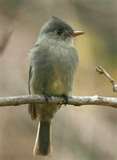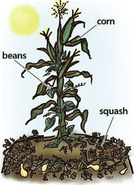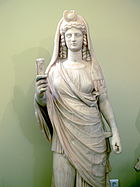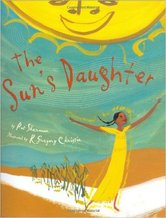Once Upon a Time...

Peewee Bird
...the people of the earth did not have to dig or plant or hoe or reap, for the Sun had sent her own daughter Maize to walk among them. Wherever tall, golden Maize walked, tall stalks bearing golden grain grew. So the people had only to reach up in order to eat.
Maize loved the earth so much that she called for her sisters Pumpkin and Red Bean to join her. Soon bright orange pumpkins and scarlet beans bloomed amid the golden stalks. All day, the three sisters sang as they worked, and the wind carried their sweet voices across the filed and far into the forest.
Maize loves the earth, but her mother the Sun worries. “Stay in the open fields where I can see you,” the Sun tells her three daughters. “Don’t go near the forest or down among the rocks and caves.” What does Maize do? One night when a restless breeze is blowing, she heads right for the forest where she falls in love with the underground god Silver. He takes her to his cave and when she tries to return to the fields the next morning, he will not let her go.
Furious at the loss of her daughter, the Sun turns her face from the earth. Winter sets in. The ground turns white, the trees turn to stone, and the birds fly up to the arms of the sun. Maize begs Silver to let her leave for at least half the year. Finally, he relents a little. He will let her return to the earth for a half-year, he says, “when the trees weep.”
“How can the trees weep?” she asks, “When they have turned to stone.”
The answer comes from a brave band of tiny peewee birds. Dancing in the frozen branches, they beg the trees, “Please weep.” And slowly the tree do begin to weep. Sweet tears of maple sap trickle down their rough trunks.
Maize returns to the earth. The Sun smiles upon the fields again. The people rejoice. “But you must all help, now,” Maize tells them. “For I will only be with you for half the year.”
Maize loved the earth so much that she called for her sisters Pumpkin and Red Bean to join her. Soon bright orange pumpkins and scarlet beans bloomed amid the golden stalks. All day, the three sisters sang as they worked, and the wind carried their sweet voices across the filed and far into the forest.
Maize loves the earth, but her mother the Sun worries. “Stay in the open fields where I can see you,” the Sun tells her three daughters. “Don’t go near the forest or down among the rocks and caves.” What does Maize do? One night when a restless breeze is blowing, she heads right for the forest where she falls in love with the underground god Silver. He takes her to his cave and when she tries to return to the fields the next morning, he will not let her go.
Furious at the loss of her daughter, the Sun turns her face from the earth. Winter sets in. The ground turns white, the trees turn to stone, and the birds fly up to the arms of the sun. Maize begs Silver to let her leave for at least half the year. Finally, he relents a little. He will let her return to the earth for a half-year, he says, “when the trees weep.”
“How can the trees weep?” she asks, “When they have turned to stone.”
The answer comes from a brave band of tiny peewee birds. Dancing in the frozen branches, they beg the trees, “Please weep.” And slowly the tree do begin to weep. Sweet tears of maple sap trickle down their rough trunks.
Maize returns to the earth. The Sun smiles upon the fields again. The people rejoice. “But you must all help, now,” Maize tells them. “For I will only be with you for half the year.”
Want to learn more about Maize and her world? Here are some things you can do:

Learn how to grow a Three Sisters Garden from the American Indian Health Project
Listen to peewee birds sing at the Cornell University Lab of Ornithology.
Make maple sugar snow taffy (you can use shaved ice!) with the Massachusetts Maple Producers Association.
Listen to peewee birds sing at the Cornell University Lab of Ornithology.
Make maple sugar snow taffy (you can use shaved ice!) with the Massachusetts Maple Producers Association.
Pourquois Tales or, "Why do things happen that way?"

Persephone
The Sun’s Daughter is what anthropologists like to call a pourquois story--a story that explains a natural phenomenon, in this case the changing of the seasons. Many people are familiar with the Greek myth of Persephone, the harvest goddess who is taken to the underworld by Pluto and only released when she promises to return after a half-year upon the earth.
Stories of Corn Maidens like Maize and Persephone are told by many cultures. They go back to the earliest days of agriculture and are among the oldest pourquois tales in the world.
You can find out more about world mythology from the Encyclopedia Mythica. The Chicago Public Library also has a great list of folklore for children in all categories.
Photo Credits:
Pewee Bird, Audubon Society
Three Sisters Garden, University of Minnesota, School of Education
Persephone, Archaeological Museum of Crete
Stories of Corn Maidens like Maize and Persephone are told by many cultures. They go back to the earliest days of agriculture and are among the oldest pourquois tales in the world.
You can find out more about world mythology from the Encyclopedia Mythica. The Chicago Public Library also has a great list of folklore for children in all categories.
Photo Credits:
Pewee Bird, Audubon Society
Three Sisters Garden, University of Minnesota, School of Education
Persephone, Archaeological Museum of Crete

Click on the book cover to purchase your copy.